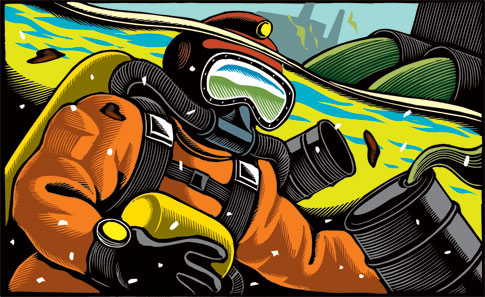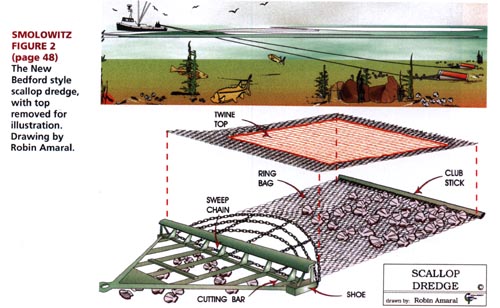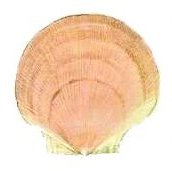Why Dive in New Jersey?
Beneath the Waves
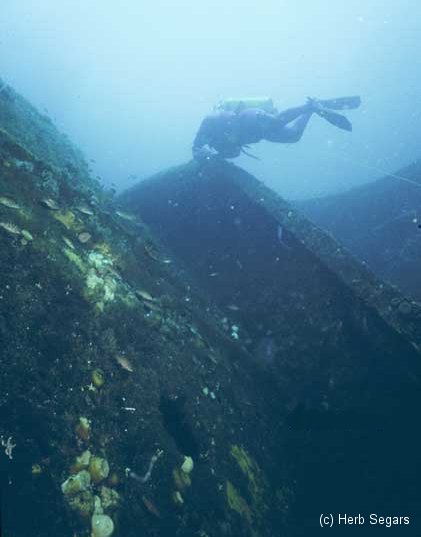
By Steve Nagiewicz & Herb Segars
Photography by Herb Segars
We have all watched television and marveled at the presentations of renowned underwater explorer Jacques Cousteau, or the movie fiction of Peter Benchley's "Jaws" or "The Deep." they have given us a glimpse into the strange underwater world that few of us get to explore. Yet how many of us have sat along the water's edge and wondered what mysteries must lie beneath the waves?
There are thousands of certified scuba divers in New Jersey and many more from neighboring New York and Pennsylvania the sport is enjoyed by a large cross-section of people. Most of the organizations that train divers set a minimum age limit of 12. At the upper end of the spectrum, many divers over the age of 60 have entered the undersea world.
Why do we venture into this undersea domain? The answer lies with the individual. For some, it is the chance to discover the mystery and beauty of an alien world. For others, it is the ability to glide and soar effortlessly over vast reefs whose palette of colors and panorama of fish and coral life seem like paintings come to life.
This picture is somewhat different for New Jersey divers. Here, the warm, clear waters of the Caribbean are replaced by the cooler blue-green waters of the Mid-Atlantic. The New Jersey diver trades the tranquil setting of the coral reefs for the intrigue of shipwrecks. Mere mention of the word "shipwrecks" conjures visions of pirate ships laden with treasure, or maritime disasters like the tragedy of Morro Castle, which burned off Asbury Park, or sinking of the Stolt Dagali, which was sliced in half by the passenger liner Shalom on Thanksgiving 1964.
A typical New Jersey dive trip could begin with a visit to the wreck of the Stolt, followed by visits to several more commonplace or unknown shipwrecks. These wrecks provide gathering areas for diverse marine life that feeds in the nutrient-rich waters off the Jersey shore. The normally barren, sandy ocean floor offers the marine community very little in the way of shelter and food sources. Shipwrecks solve this dilemma. These derelict and decaying hulks are transformed into reef communities full of colorful cold-water corals and anemones.
The shipwrecks, once victims to violent storms, collisions, fires, and the misfortunes of war, are no longer able to provide transport and passage. Their human captain and crew are replaced by sea bass, bergalls, and ling which now patrol the decks and cargo holds. Jumbled piles of machinery and debris offer hiding places for lobster and crabs. Every available space is utilized and life is everywhere! These wrecks resemble small islands under the sea communities where fish are the residents and scuba divers are the tourists.
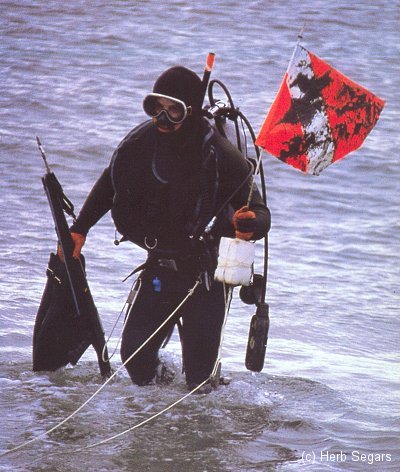
On most spring and summer days, boats can be seen heading out from the many harbors and inlets along the shore, carrying scuba divers out to these fantastic dive sites. There are more than 4,000 recorded shipwrecks, and each offers divers something different. Some can even provide an insight into the maritime history of the New Jersey coast.
Shifting sands on the ocean bottom regularly reveal new pieces of the wrecks, helping artifact divers and underwater archaeologists uncover brass and bronze relics of the past. Diving offers an opportunity to explore old shipwrecks and to discover nautical antiques such as glass bottles, or bits of brass. On rare occasions, the shipwrecks may yield gold or silver coins, valuable china, or even brass cannons. Many such items have been recovered from several ships that are rumored to be treasure ships!
Other divers find that spearfishing is their favorite underwater pursuit. Their quarry might be flounder, blackfish, sea bass, ling, or striped bass. Many times an unsuspecting diver will surprise a flounder lying camouflaged on the sand, causing It to flitter away like a Frisbee skimming over the sand. Flounder are sometimes so numerous that one frightened fish will race away only to startle another, which will scare another ... before long the fleeing flounder look like dozens of shoeless soles flapping in the breeze!
Underwater photographers find that the diverse forms of marine life make excellent subjects. Capturing the scenic beauty of this underwater world is of prime importance to the photographer. Different tastes and perspectives are evident in each underwater photographer's photo album. Whether their models are fish, other divers, or the myriad small invertebrate life that thrives on the wrecks, the end result is the same - the beauty of this undersea kingdom is brought to their friends on land.
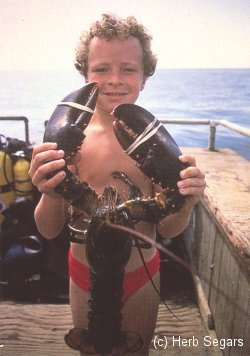
11-year old Tom Segars
Most seasoned Jersey divers search the crevices and holes on these shipwrecks for an elusive but delicious crustacean known as the North American lobster. Few New Jerseyans are aware of the large lobster population located off this coast. Even fewer are aware of the methods divers use to capture these tasty crustaceans. "I know how you catch them, " quoted one dockside bystander. "They are just walking all over the bottom, waiting for you to scoop them into your bag." If it were only true! It would save many divers several bruised fingers! Lobsters live in holes on wrecks. When viewed by searching divers, they appear claws first. To catch a lobster, a diver must plunge his or her hand into this hole with sufficient speed to grab the lobster before it can retreat deeper into its lair. On many occasions the lobster is quicker, leaving the unfortunate diver to discover just how hard it can pinch.
Divers and fishermen are working with marine biologists to help create artificial reefs to attract and support marine life. These man-made reefs are often no more than old ships, useless barges, or even collections of old tires. If you could imagine what an old junkyard would look like underwater, you would have a good idea of what the artificial reefs are like. The reefs help provide fish with more sanctuaries on the barren seafloor.
New Jersey's diving community has worked also with the state museum to set up educational exhibits of relics and artifacts recovered from the wrecks off New Jersey.
Whatever kind of diving one might choose, be it offshore wrecks, man-made reefs, rock piles, or inlets, It is available in New Jersey. So the next time you spot strangely clad divers preparing to dive, you might just like to tag along and visit a most unforgettable adventure land - New Jersey beneath the waves.
This article first appeared in New Jersey Outdoors - July / August 1986
